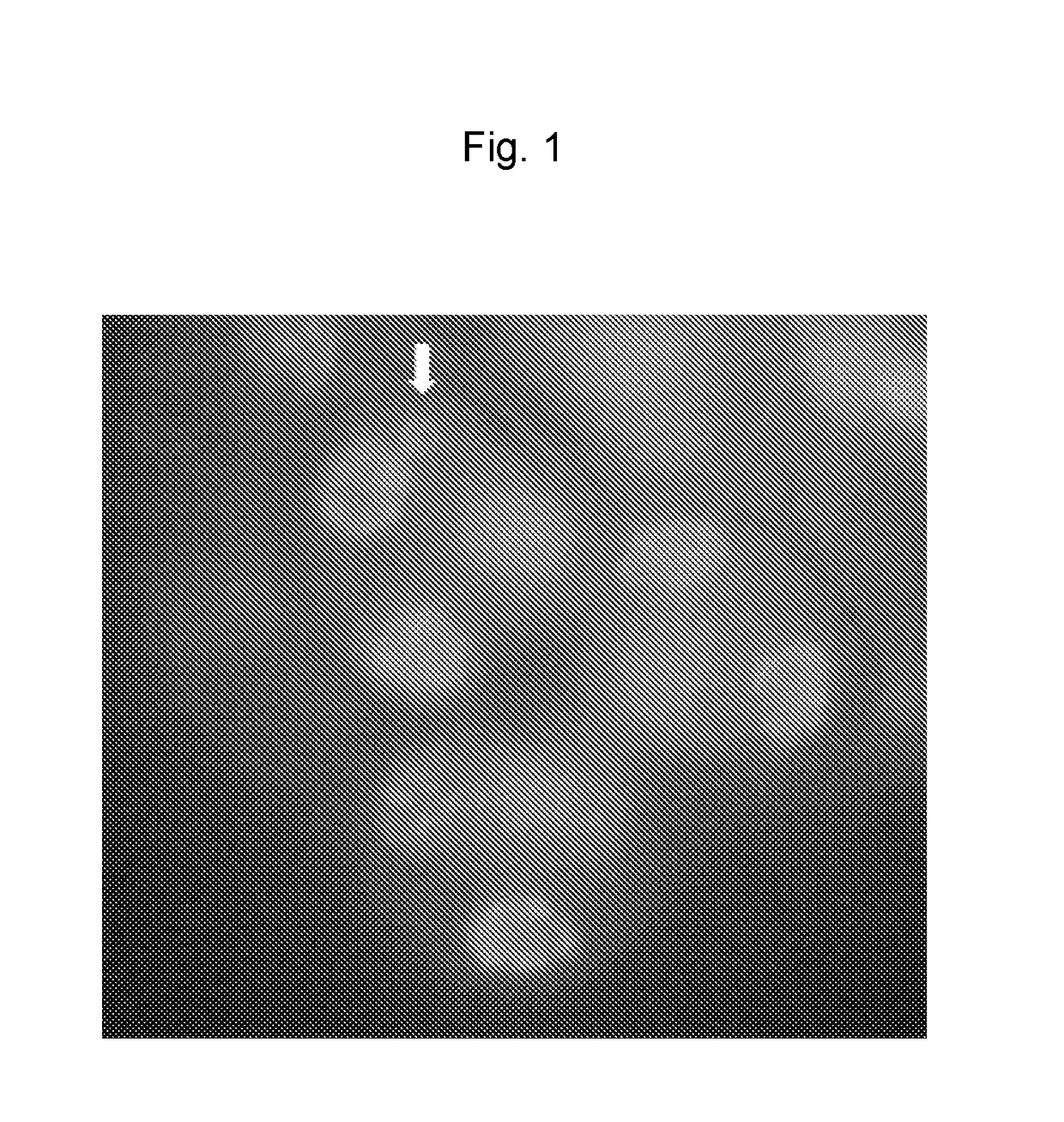Method for the production of haploid and subsequent doubled haploid plants
a technology of haploid plants and haploid cells, applied in the field of agriculture, can solve the problems of large-scale population screening, laborious and costly, and time-consuming, and achieve the effect of minimising the number of gaps and maximising the number of matches
- Summary
- Abstract
- Description
- Claims
- Application Information
AI Technical Summary
Benefits of technology
Problems solved by technology
Method used
Image
Examples
example 1
Uniparental Genome Elimination in Tomato
[0173]Material and Methods
[0174]Plant material
[0175]Three tomato cultivars were used namely “MoneyBerg TMV+”, “MicroTom” and “RZ52201”. From a tomato RZ52201 mutant population, following methods described in WO 2007 / 037678 and WO2009 / 041810, two somatic non-synonymous mutants in the gene Msi2 were selected, namely Msi2_K126-STOP and Msi2_K126M, which are both mutated at amino acid position 126. The selected mutant plant was self-pollinated and in the offspring, plants were selected that were homozygous for the mutated locus. From a tomato MoneyBerg TMV+ mutant population a somatic synonymous mutant was selected, following methods described in WO 2007 / 037678 and WO2009 / 041810, in the gene Msi2, namely Msi2_D337D, which is mutated at amino acid position 337 (C to T). The selected mutant plant was self-pollinated and in the offspring, plants were selected that were homozygous for the mutated locus.
[0176]Method
[0177]Uni-parental genome elimination...
example 2
Uniparental Genome Elimination in Arabidopsis
[0183]Materials and Methods
[0184]Plant Material
[0185]The following Arabidopsis NASC stock centre accessions were used; Columbia (background line, Col-0, N1092), Col-5 (N1644), Arabidopsis Msi2 gene (At2g16780) T-DNA insertion lines (N720344 and N501214, in Col-0 background) and, since it is not known whether the Msi2 and Msi3 gene are functionally redundant genes, Arabidopsis Msi3 gene (At4g35050) T-DNA insertion mutants (N309860, N309863 and N564092 in Col-0 background). The T-DNA insertion lines were evaluated by means of PCR amplification and subsequent sequencing of the putative T-DNA insertion locus in order to determine the exact insertion in the Arabidopsis Msi2 and Msi3 genes. Based on the finding that the insertions were located in exons of either Msi2 or Msi3 genes it was concluded that these T-DNA insertion lines are true knock-outs for either the Msi2 or Msi3 gene. The exact positions as counted in number of bases downstream ...
PUM
| Property | Measurement | Unit |
|---|---|---|
| temperature | aaaaa | aaaaa |
| temperature | aaaaa | aaaaa |
| temperatures | aaaaa | aaaaa |
Abstract
Description
Claims
Application Information
 Login to View More
Login to View More - R&D
- Intellectual Property
- Life Sciences
- Materials
- Tech Scout
- Unparalleled Data Quality
- Higher Quality Content
- 60% Fewer Hallucinations
Browse by: Latest US Patents, China's latest patents, Technical Efficacy Thesaurus, Application Domain, Technology Topic, Popular Technical Reports.
© 2025 PatSnap. All rights reserved.Legal|Privacy policy|Modern Slavery Act Transparency Statement|Sitemap|About US| Contact US: help@patsnap.com

